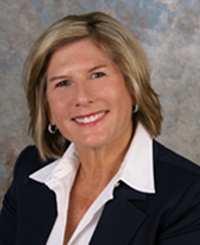How Much Money Do You Need to Retire?
How do you make your money last as long as you do? Ah, if it were only as easy as throwing out a number – actually, about $10 million would probably do nicely. But, since most of us won\’t be in the position to have that kind of nest egg, how do you determine how much you\’ll need in retirement? Let\’s discuss some general rules and some important, often overlooked factors.
There are some scary statistics out there. About a third of adults have said they haven\’t saved anything for retirement, and almost half of retirees rely on Social Security as their chief source of income. Ten percent of retirees have returned to work because of financial considerations, and roughly 20 percent have postponed their retirement because of money. Of those presently working, 80 percent feel they won\’t be able to retire completely. So, how do you figure out what you need to retire?
Experts offer a variety of methods to come up with the right “number” for you. Here are a half dozen:
- One suggestion is that you\’ll only need 60 to 80 percent of your current income to retire, since it costs money to make money. Workers generally pay for transportation, a work wardrobe, meals, and Social Security taxes, plus they are saving for their retirement. In addition, your children may already be finished with school, your home is paid off, or you plan to downsize or move to a less expensive area. If this scenario describes your situation, perhaps using the 60 to 80 percent rule will work for you.
- Some experts feel you need about 100 to 120 percent of your pre-retirement income (especially when you first retire). You may still have kids in college, have parents you help support, have to pay a larger portion of your health insurance than when you were working, plan on traveling (since you\’ve waited until you retired to do so), want to relocate to a more expensive resort-style setting, plan to pursue new hobbies, want to eat all your meals out, etc.
- Another way to look at saving for retirement is to put at least 10 percent of your gross income aside for your nest egg. If you\’ve hit 50, and haven\’t started saving, increase this to at least 20 percent.
- Once you\’re retired, you can take out a fixed percent of your savings every year, say three to four percent. You probably won\’t run out of money, but of course what you have to spend is determined by the value of your investments. A variation on this is to subtract the annual inflation rate from your annual investment return to determine the percentage of your savings you can spend for the upcoming year. For example, if you spent $60,000 in your first year, and the investment return rate minus the inflation rate was three percent, you would plan to spend $61,800 the next year (103% of $60,000 = $61,800).
- Another method is to use a multiple of 25 to 30 of your living expenses at age 60 to determine total need in retirement. So, if your expenses were $80,000 at 60, you\’d need about $2.4 million to help ensure you don\’t run out of money before you run out of life.
- Use a retirement calculator. There are a number of tools out there that allow you to plug in information, and the amount of money you need to retire will be calculated for you. A few free ones you can try: the American Savings Education Council\’s “Ballpark Estimate” worksheet at www.asec.org (click on “Ballpark Estimate”) and the ING Retirement Calculator at www.ing-usa.com (put “Retirement Calculator” into the search bar, then click on “Retirement Calculator” again).
Most retirement calculators assume an average annual return and ignore the fact that investment returns fluctuate. So, even if you achieved your assumed average annual rate of return on your investments, you could earn a lower return in the early years of retirement and a higher return in the later years, causing you to miss your goals. A calculation called a Monte Carlo simulation attempts to mimic the real-life ups and downs of the stock market and doesn\’t presuppose a fixed annual return. It incorporates more of a bell curve, though the market doesn\’t necessarily follow that pattern, either. However, it attempts to project the success rate of your retirement assumptions. Try out a Monte Carlo simulation at http://www3.troweprice.com/ric/RIC/. If you have an account at Vanguard, Financial Engines, Morningstar, or Fidelity Investments, you can pay to access their more complex Monte Carlo simulations.
Keep in mind that whatever type of forecasting you do, the original assumptions need to be sound to maximize your probability of a successful financial retirement plan. Remember the axiom “Garbage in – garbage out.” People often tend to underestimate how long they will live (assume at least 90 years), and overestimate the return rate (use a conservative number such as seven percent). Don\’t ignore inflation (goods and services purchased for $25,000 today will cost more than $80,000 in 30 years, assuming a 4 percent inflation rate), and for health care costs (before Medicare kicks in at 65), you may need to budget an extra $12,000 or so (ignoring inflation) per year. Also, think about other irregular expenses you may have, such as replacing or repairing a roof, hot water heater, automobile, etc.
If the answer to “How Much Money Do You Need to Retire?” was easy, there wouldn\’t be the proliferation of books and magazines offering advice, and entire industries built upon helping people figure out the answer. Of course, you would be well served to review any sum you arrive at using these estimation techniques with a certified financial planner or certified public accountant.


